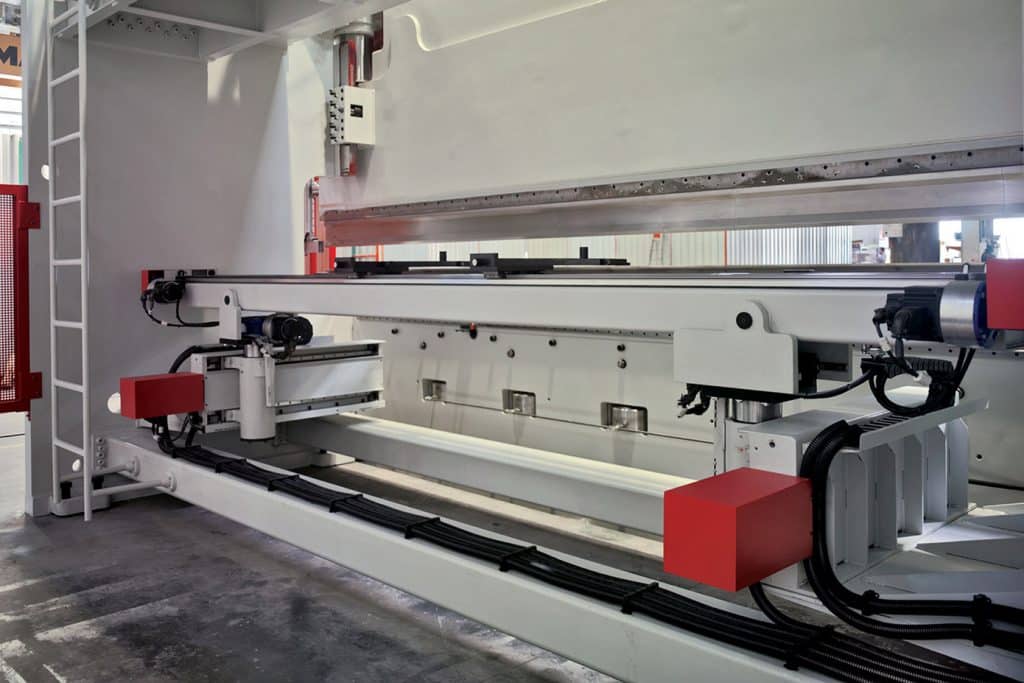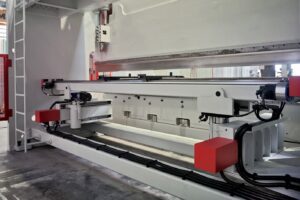We have said before back in Spring, that when it comes to press brakes, getting the very best result depends not only on knowing how to use your press brake, but also in gaining a deeper understanding of how their component parts work together to ultimately provide you with a piece of kit that will reliably deliver the best results, time and time again.
With your press brake’s backgauge this is certainly the case and there are some important choices to make in order to ensure all your needs, and potential needs for the future are well catered for. But first let’s take a quick look at what exactly it is that your backgauge does for you.
The backgauge interfaces with the computer numeric control of your CNC press brake. That’s the Windows-based PC/controller where you send the information that enables your press brake to do the things you tell it to. The backgauge is a mechanical system moving along one, two or even several different axes with the goal of positioning your piece of metal precisely where it needs to be for the forming process to take place.
Each one of those axes mentioned above (up to 6) is accurately controlled by its own dedicated DC motor and travels on ballscrew spindles, there are also have two micrometric stop-fingers with height and lateral adjustments, that means a degree of control, automation and sheer accuracy that is beyond even the most skilled NC press brake.
When choosing your backgauge, it is vital to think carefully about your needs. Back in the 1970’s when automated backgauges were first introduced to the industry, the choices were less due to the fact that they moved on the X axis only, but even this began to revolutionise the way we worked with less handling, less stopping and less re-positioning.
Soon after that, there came to the ability to also control the Y axis, then the R axis and now we even have the ability to control the Z1, Z2, X1, X2 and R1 and R2 for special applications and peerless automation.
That means that now, you have a lot more choice and at Selmach our range covers every need; we have a backgauge system with X-axes, a range of 1000mm and a maximum travel speed of 330 mm/s. But we also have backgauge systems with X-R axes and X-R-Z1-Z2 axes; in fact we have a wide range of options up to heavy duty six axis backgauges.
Which one you choose will depend on how versatile you need your press brake to be, you might also want optional hydraulic tool clamping, laser angle measurement or sheet-following arms, so as you can see; when we said there is a lot to consider, we really meant it.
Fortunately we are on hand to help you find out which backgauge might be right for your needs. Here you can see our extensive range of Press Brakes for yourself, and get in touch any time for help and advice on any and all things related to backgauges.
Published 5th September 2018


